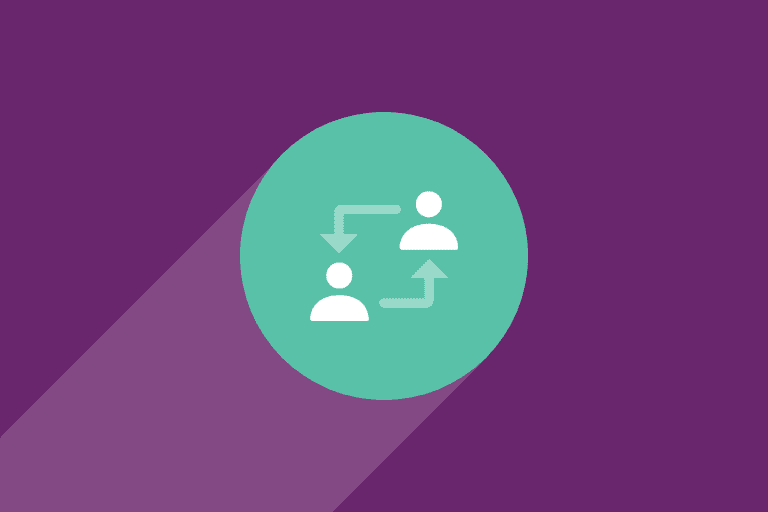A new era of B2B marketing is emerging. Account-Based Marketing (ABM)—directing marketing and sales resources towards high-value accounts—has long been the dominant strategy. However, the rise of user-centricity and freemium models has introduced Product-Led Growth (PLG)—focusing on product features and education rather than relying on sales and marketing campaigns—as a compelling alternative.
The question is, which approach reigns supreme in today’s B2B marketing landscape? Or, is there a way to leverage the strengths of both for an even more effective marketing strategy?
Let’s delve into these two approaches by exploring the strengths, limitations, and potential of PLG and ABM, both individually and when used together.
Traditional B2B ABM strategies
Account-Based Marketing has long since established itself as a powerful strategy for reaching high-value customers. ABM attempts to go beyond traditional mass marketing approaches and focuses on meticulously targeting a defined set of accounts with personalized messaging and outreach efforts.The core principles of ABM revolve around careful identification, personalization, relationship building, and account-based orchestration.
First, ABM involves identifying target accounts that perfectly align with your ideal customer profile (ICP). This ensures a surgical focus on the companies most likely to benefit from your product or service and become long-term, high-value customers.
Next, ABM emphasizes the importance of personalization. Generic marketing messages simply won’t cut it in a successful ABM campaign. The goal is to tailor messages to address the specific needs, challenges, and pain points of each target account. This personalized approach fosters deeper connections with key decision-makers within those accounts.
Building strong relationships is another key tenet of ABM. By nurturing these relationships and demonstrating a genuine understanding of the target account’s business, ABM helps establish trust and positions your company as a valuable partner.
Finally, successful ABM requires account-based orchestration. This means ensuring that all marketing and sales efforts are aligned, presenting a unified front and a seamless customer journey for the target accounts.
Benefits of ABM
The targeted nature of ABM translates into several significant advantages for B2B marketers. Perhaps the most compelling benefit is the potential for a high return on investment.
By focusing resources towards a defined set of high-value accounts, ABM campaigns can keep costs manageable while generating significant revenue compared to broader marketing and sales efforts.
Because ABM fosters deeper customer relationships with key decision-makers within target accounts, nurturing these relationships can help streamline the sales process by generating well-qualified leads, primed for conversion.
Challenges with ABM
While ABM offers a powerful approach, it’s not without its limitations or difficulties. One of the key challenges is the time-consuming and resource-intensive nature of this strategy. Developing a successful ABM campaign requires significant upfront planning, execution, and ongoing nurturing of target accounts.
Additionally, sales and marketing teams need to be in close communication to ensure that they’re telling the same story with deliverables
This can be exceptionally difficult for many organizations because it can require modern technologies, engineering resources, and, most challenging of all, maintaining data hygiene by ensuring contact and account data is updated accurately and regularly at all interaction points. Anyone who’s spent time working in sales operations can tell you how difficult it is to get sales reps to update contact and account records with details about offline interactions.
Another limitation is the potential effectiveness for smaller, niche markets. If your ideal customer profile (ICP) is highly specific and the pool of high-value accounts is limited, ABM may not be the most scalable approach.
The Rise of PLG
Product-Led Growth represents a paradigm shift in B2B marketing since this strategy prioritizes the product itself as the primary driver of user acquisition, activation, and retention. Unlike traditional sales-led models, PLG empowers users to explore and experience the product directly, driving organic growth and customer acquisition.
Companies like Box and Airtable are prime examples of PLG in action. These businesses have successfully leveraged their products to attract and engage a vast user base, often bypassing traditional sales cycles altogether. PLG empowers users to become advocates for the product, fueling organic growth through word-of-mouth and referrals.
Benefits of a PLG Strategy
By placing the product at the center of the customer journey, PLG can shorten sales cycles and increase conversion rates. Users who have already experienced the value of the product are likely to positively influence enterprise purchase agreements, reducing the need for extensive sales pitches and negotiations.
Contrary to a traditional land-and-expand approach, PLG allows for product virality to run through organizations to the point that it becomes clear—to both the PLG organization and the procurement team at the target company—that writing up a corporate purchase agreement is the most logical next step. This streamlined process can lead to faster revenue growth and improved sales efficiency.
Beyond rapid scaling and reduced customer acquisition costs, PLG offers an opportunity to gain a deep understanding of user behavior and preferences. By observing how users interact with the product, businesses can gain invaluable insights into product usage, pain points, and areas for improvement. This data-driven approach fuels product development and iteration, ensuring the product continually evolves to meet user needs.
Lastly, a major advantage of the PLG strategy is the ability to streamline the purchasing process. Unlike traditional sales-led models that often involve lengthy negotiations and approvals, PLG empowers individuals and small teams to make purchases independently. This self-serve model eliminates the need for extensive involvement from sales, legal, and finance teams, accelerating the sales cycle and reducing friction. By offering clear pricing, packaging and user-friendly ecommerce solutions, PLG empowers customers to evaluate and purchase the product or service that best suits their needs without the burden of complex (and costly) sales interactions.
Challenges with a PLG Strategy
While PLG offers immense potential, it also has its drawbacks. First and foremost, not all businesses or products are suited for a purely product-led approach. Complex enterprise solutions such as electronic health record (EHR) or enterprise resource planning (ERP) softwares for example, cannot be used on an individual level or require significant sales and implementation support, making a traditional sales-led model a requirement.
Another significant hurdle lies in monetization. Converting free users into paying customers requires a well-defined value proposition and compelling upgrade paths. Identifying the right monetization strategy, whether it’s freemium, premium tiers, or feature-based pricing, is crucial for long-term success. Also, it’s essential to continuously provide value and address user needs proactively. Without ongoing product improvements and feature enhancements, users may lose interest and seek alternatives.
Also, PLG demands a significant investment in user experience and onboarding. To drive product adoption and retention, companies must prioritize seamless and intuitive interactions throughout the entire journey. This requires substantial upfront investment in infrastructure, technology, and support resources.
Finally, PLG can lead to an organizational focus on short-term metrics like user acquisition and activation, potentially at the expense of long-term customer value and retention. It’s crucial to strike a balance between rapid growth and building a sustainable customer base that feeds into larger, sales-led deals.
The Hybrid Approach: Merging PLG and ABM for Maximum Impact
While PLG and ABM represent very distinct strategies, their strengths can be quite complementary. A hybrid approach that combines elements of both models can allow organizations to leverage the power of product-led growth to bring in immediate revenue and acquire a wider audience while simultaneously nurturing high-value accounts through targeted ABM initiatives.
Using both PLG and ABM allows companies to capitalize on the viral potential of PLG while allowing sales resources to be focused on larger, enterprise-level deals, rather than wasting time on individual or small team transactions. Additionally, insights gained from PLG can inform ABM targeting and personalization, leading to more effective outreach and conversion rates.
By analyzing user behavior, product usage, and feature adoption within the broader user base, marketers can identify high-value segments and tailor ABM efforts accordingly. This wealth of qualitative and quantitative data provides a deeper understanding of customer needs and preferences, enabling more precise targeting and personalized messaging.
By combining the best of both worlds, organizations can achieve a more balanced and sustainable growth strategy. This hybrid approach can help businesses maximize customer lifetime value, improve customer satisfaction, and strengthen overall market position.
Which Solution is Right for You?
Choosing between PLG and ABM, or adopting a hybrid approach, depends on several factors. Let’s break down when each strategy might be most effective.
When to Choose ABM
- High-value, complex products or services: For enterprise solutions requiring significant customization and support, ABM is often more suitable.
- Limited target market: If your ideal customer profile is narrow, ABM can allow you to focus resources on a specific set of accounts.
- Existing relationships with key accounts: If you already have established relationships with high-value customers, ABM can be used to deepen those connections.
When to Choose PLG
- Product is self-serve: If your product is easy to use and doesn’t require extensive sales or implementation support, PLG could be the ideal approach.
- Large, addressable market: PLG thrives in markets with a significant number of potential users.
- Focus on rapid growth and scalability: If quick user acquisition and expansion are your primary goals, PLG can be a powerful strategy.
When to Consider a Hybrid Approach
- Both requirements met: Your product, sales, and marketing infrastructure are fully enabled for both PLG and ABM
- Need to address a diverse customer base: Combining PLG and ABM allows you to cater to different customer segments with tailored strategies.
- Resource allocation optimization is a priority: By strategically allocating resources between PLG and ABM, you can maximize your marketing and sales efforts.
Ultimately, the best approach depends on your specific business goals, target market, and available resources. If your organization is set up with the right people, processes and technology to do either, consider experimenting with both PLG and ABM to determine the optimal strategy for your organization.
To learn more about how Iterable can help your brand reach target customers, schedule a demo today.

































